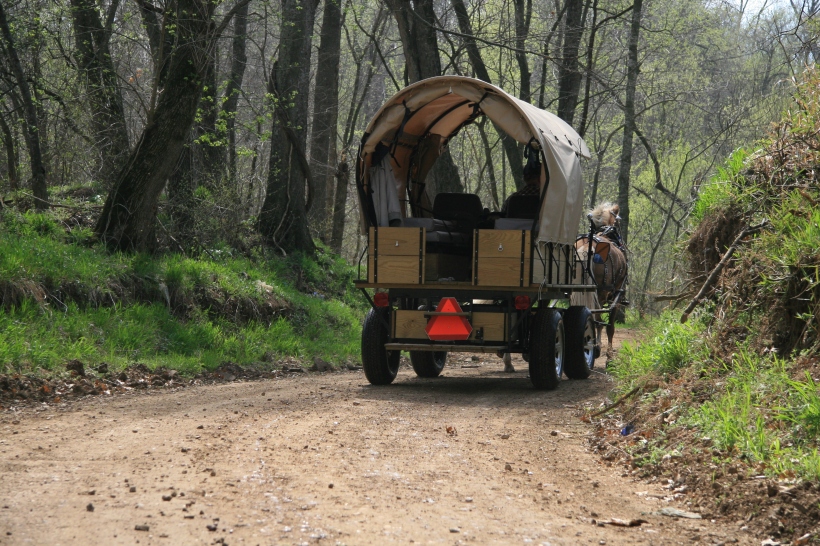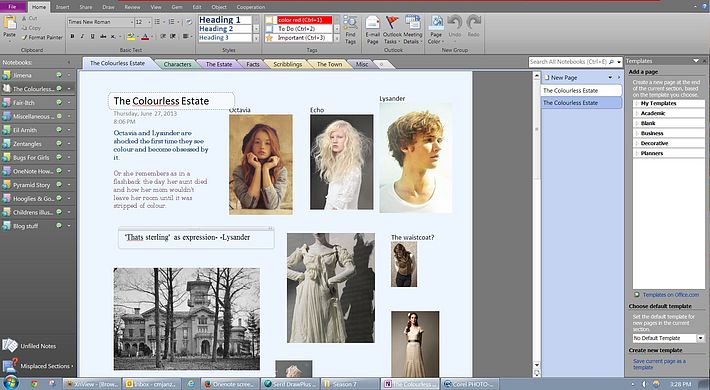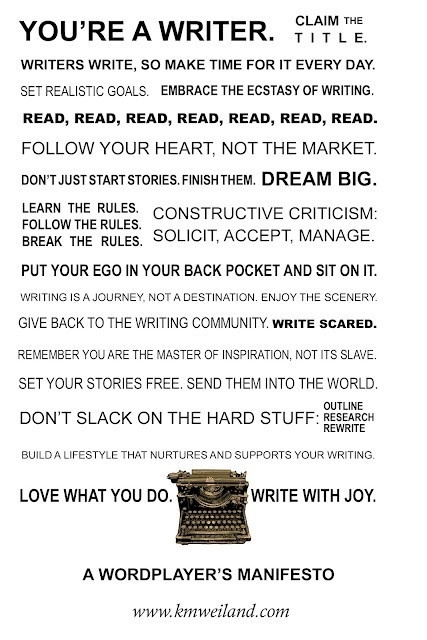I took this photo last week when I went around town taking architectural photos. An eyesore if ever. But something made me snap this. Then planning Monday’s post I was thinking of seeing as a writer sees: seeing the things that are and aren’t there, the hidden stories in scenes, the things that make Story. I like to do image prompts, a daily writing exercise from whatever springs to mind from an image. This picture is as good as any to start with.  What do you see in this picture? I’ll list what I see. A gaudy paint job in the midst of a neutrals only neighbourhood, paint discolouring from the sun and weather, graffiti on the side. An overgrown front yard, with a few stray cottage garden perennials still bravely growing fenced in blue picket. Missing soffits and a big black splotch on the canopy that now reads ‘taurant gallery.’ This much is obvious to any viewer.
What do you see in this picture? I’ll list what I see. A gaudy paint job in the midst of a neutrals only neighbourhood, paint discolouring from the sun and weather, graffiti on the side. An overgrown front yard, with a few stray cottage garden perennials still bravely growing fenced in blue picket. Missing soffits and a big black splotch on the canopy that now reads ‘taurant gallery.’ This much is obvious to any viewer.
Closer in is a door nailed shut and unreadable letters scratched in the yellow near a peach doughnut shaped peephole. And top left–what’s that? A man cage near that other window? It’s too big to be a light fixture. What is hiding behind those foggy windows? In those roof top gables? The neighborhood wild man? Does Frankenstein hang him in the cage at night to give the neighbours nightmares? And that canopy is a great hang out for bats that buzz around the wild man at night and make him frantic with hunger. He zapps them like a mosquito zapper if they get too close.
What else might a writer see in this place. Perhaps it’s an eccentric fellow’s paint factory. He’s trying to make eco-friendly paints with all natural dyes that don’t fade in the sun. He tests them himself on his own house. Every batch of new paint has to spend the night in the cage to cure in the moonlight.
Personally, I think its a free daycare. It’s painted bright sunny colours to show that children will receive bright sunny care, from a bright sunny lady. She lets bright sunny flowers grow randomly over a strange mound in the front garden, that gets higher every year. Occasionally bones poke out of it and in the dead of night she adds soil and seeds to it while humming bright sunny songs. And that cage, once in a while it’s covered with a thick tarp and muffled noises come from there. But no one asks any questions.
Challenge: Take one of the following pictures and see what all you can see in it. Make a story or list it point form and remember, writing exercises are for fun–don’t take yourself too seriously or you’ll never fly! 














 (Besides this awesome manifesto, Kim’s site is full of concise writing advice. Well worth the look.)
(Besides this awesome manifesto, Kim’s site is full of concise writing advice. Well worth the look.)





